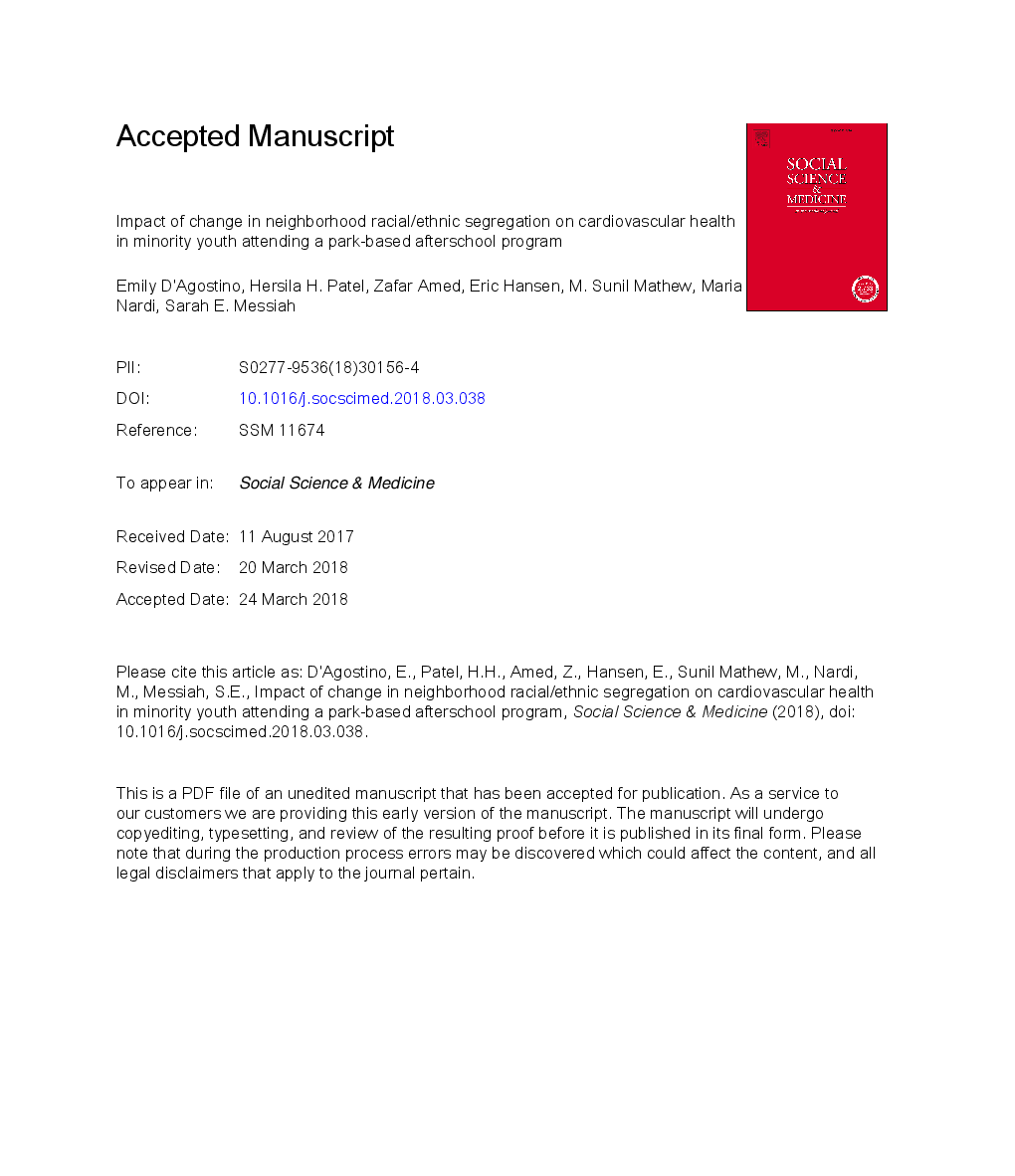ترجمه فارسی عنوان مقاله
تاثیر تغییر در محرومیت نژادی / قومی محله در سلامت قلب و عروق در جوانان اقلیت در برنامه پیش دبستانی در پارک
عنوان انگلیسی
Impact of change in neighborhood racial/ethnic segregation on cardiovascular health in minority youth attending a park-based afterschool program
| کد مقاله | سال انتشار | تعداد صفحات مقاله انگلیسی |
|---|---|---|
| 130866 | 2018 | 51 صفحه PDF |
منبع

Publisher : Elsevier - Science Direct (الزویر - ساینس دایرکت)
Journal : Social Science & Medicine, Available online 27 March 2018
ترجمه کلمات کلیدی
تفاوت های سلامت جوانان، جدایی نژادی و قومی، سلامت قلبی عروقی، فعالیت بدنی جوانان، چاقی کودکان برنامه های بهداشتی مبتنی بر جامعه،
کلمات کلیدی انگلیسی
Youth health disparities; Racial and ethnic segregation; Cardiovascular health; Youth physical activity; Pediatric obesity; Community-based health programs;

